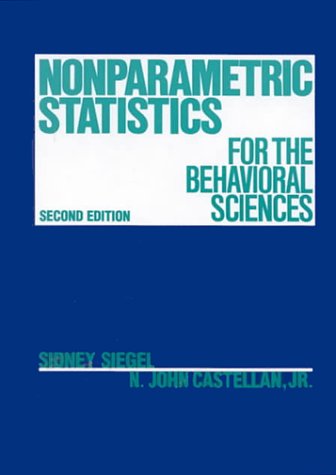Nonparametric statistics for the behavioral sciences ebook
Par hutto darlene le mercredi, mai 18 2016, 20:51 - Lien permanent
Nonparametric statistics for the behavioral sciences by Sidney Siegel


Nonparametric statistics for the behavioral sciences Sidney Siegel ebook
ISBN: 9780070573,
Publisher: McGraw-Hill
Format: pdf
Page: 332
Yesterday's post described how we can bin the independent variable in a regression to get a nice non-parametric response function even when we have large data sets, complex standard errors, and many control variables. Handbook of parametric and nonparametric statistical procedures, 3rd edition David J. Nonparametric statistics for the social sciences, (2nd ed.). Towards an understanding of the relationship between family-oriented benefits and employee behaviors: Does coworker support matter? Statistical power analysis for the behavioral sciences (2nd ed.). If you think it is appropriate to treat your categories as continuous, a good candidate would be one of the variations of the intra-class correlation coefficient. Statistical power analysis for the behavioral sciences. If it's ordinal, Siegel and Castellan's Nonparametic Statistics for the Behavioral Sciences has a whole chapter on measures of association for ordinal data. Journal of the American Statistical Association, 76, 162-168. Gravetter FJ, Wallnau LB (2009) Statistics for the behavioral sciences. Department of Psychiatry and Behavioral Sciences. Frequently, these statistical methods model the data in the form of analysis of variance (ANOVA), or use methods often regarded as their non-parametric equivalents. Kuchler Probabilistic index: An intuitive non-parametric approach to measuring the size of treatment effects. Wong (1992) called the common language effect size statistic, is insensitive to base rates and more robust to several other factors (e.g., extreme scores, nonlinear transformations). Encyclopedia of Statistics in Behavioral Science – Volume 2 Brian Everitt (Editor) wiley 2005. The probability-based measure A, the nonparametric generalization of what K. Dominance statistics: Ordinal analyses to answer ordinal questions.